2022 was a surprisingly great year for monitors
I don’t know if this is a delayed effect of the remote working trend or simply a bunch of technologies all maturing at the same time (or possibly both), but 2022 was an unusually great year for monitors. So before we move onto a new generation of gadgets in 2023, I just wanted to take a little time to recap some of the standout displays that came out in the last 12 months.
Before we even get to specific models, this year we saw the arrival of two new major players in the gaming monitor space thanks to Sony’s Inzone brand and HyperX’s line of Armada displays. For a company like Sony that’s responsible for some of the most popular consoles of all time, this move was both a surprise yet also feels a bit late. That’s because while Sony has dabbled with gaming displays in the past (remember that weird Playstation 3D TV from 2011), the company has largely refrained from expanding into the wider gaming hardware and accessories market — especially when it comes to PC peripherals.
Sam Rutherford/Engadget
That said, while Sony’s line of Inzone devices is made up of headphones and monitors that share a similar design with the Playstation 5 and a few exclusives features, it’s important to note that the devices come from Sony Electronics (the company that makes TVs and wireless earbuds) and not Sony Interactive Entertainment (aka the Playstation people). That means you won’t find any explicit Playstation logos, but what you do get is some of the fancy tech found on Sony’s other premium gadgets like its flagship WH-1000XM5 wireless headphones.
As for monitors, after testing it out earlier this year, I found the Inzone M9 to be one of the best 4K gaming displays for the money. Now going for just $799 (down from its $899 launch price), you get a 27-inch display with VRR and NVIDIA G-Sync support, DisplayHDR 600 certification and full array local dimming. I also appreciate some of the smaller touches Sony included such as a built-in KVM switch and surprisingly decent onboard stereo speakers, the latter of which makes it really easy to hook up a PC or a PS5 and just start gaming without worrying about audio.
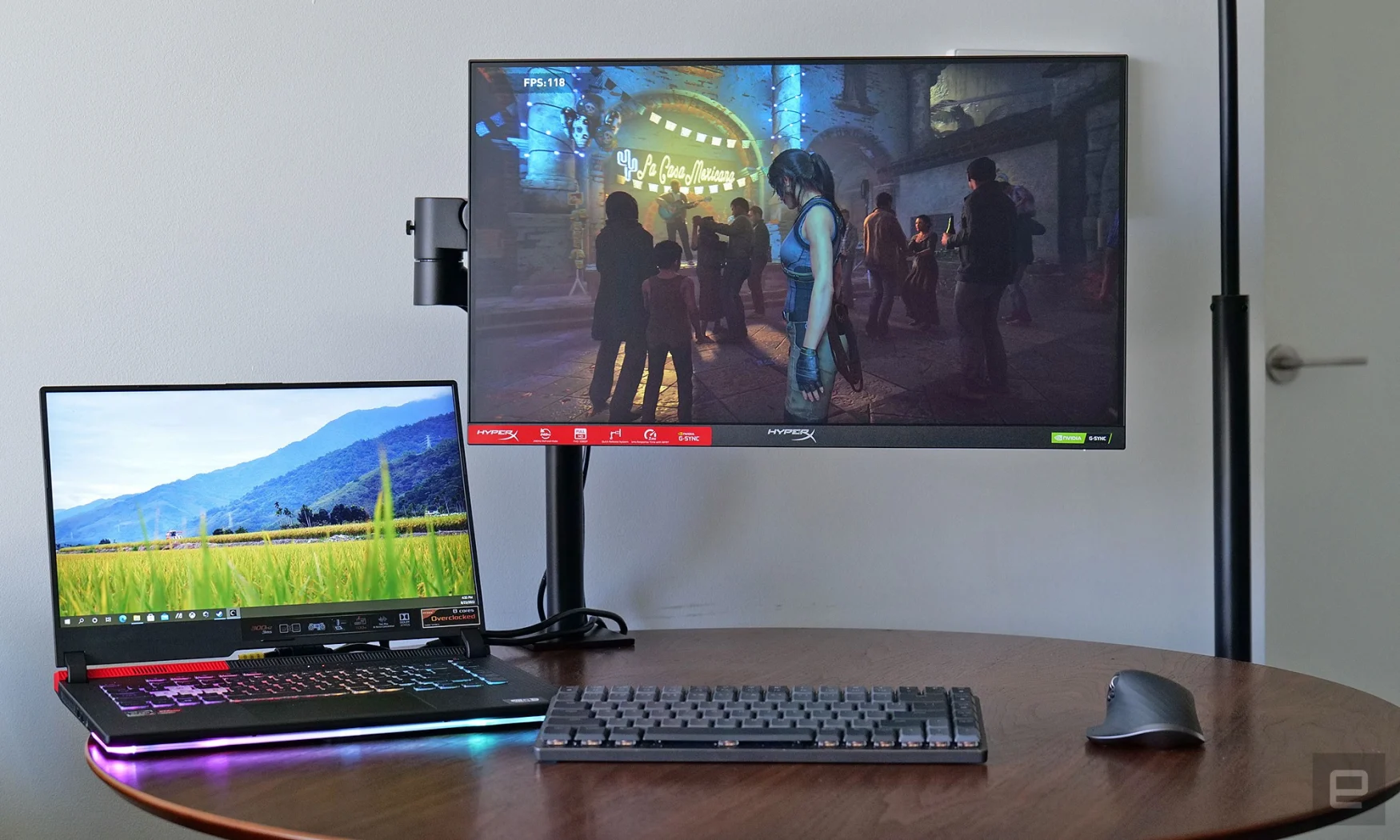
Sam Rutherford/Engadget
Meanwhile, HyperX (which is now owned by HP) has also joined the fray this year with its line of Armada gaming monitors. Similar to Sony, HyperX’s first batch of displays features a small twist on the standard formula because, instead of shipping with a traditional desktop stand, both of its new monitors are only available with a bundled monitor arm. And when combined with a 25-inch panel that offers a 1080p resolution and a 240Hz refresh rate for just $450 or a 2,560 x 1440 display with a 165Hz for $500 on the 27-inch model, what you get are some great mid-range displays, particularly for anyone looking to keep clutter to a minimum.
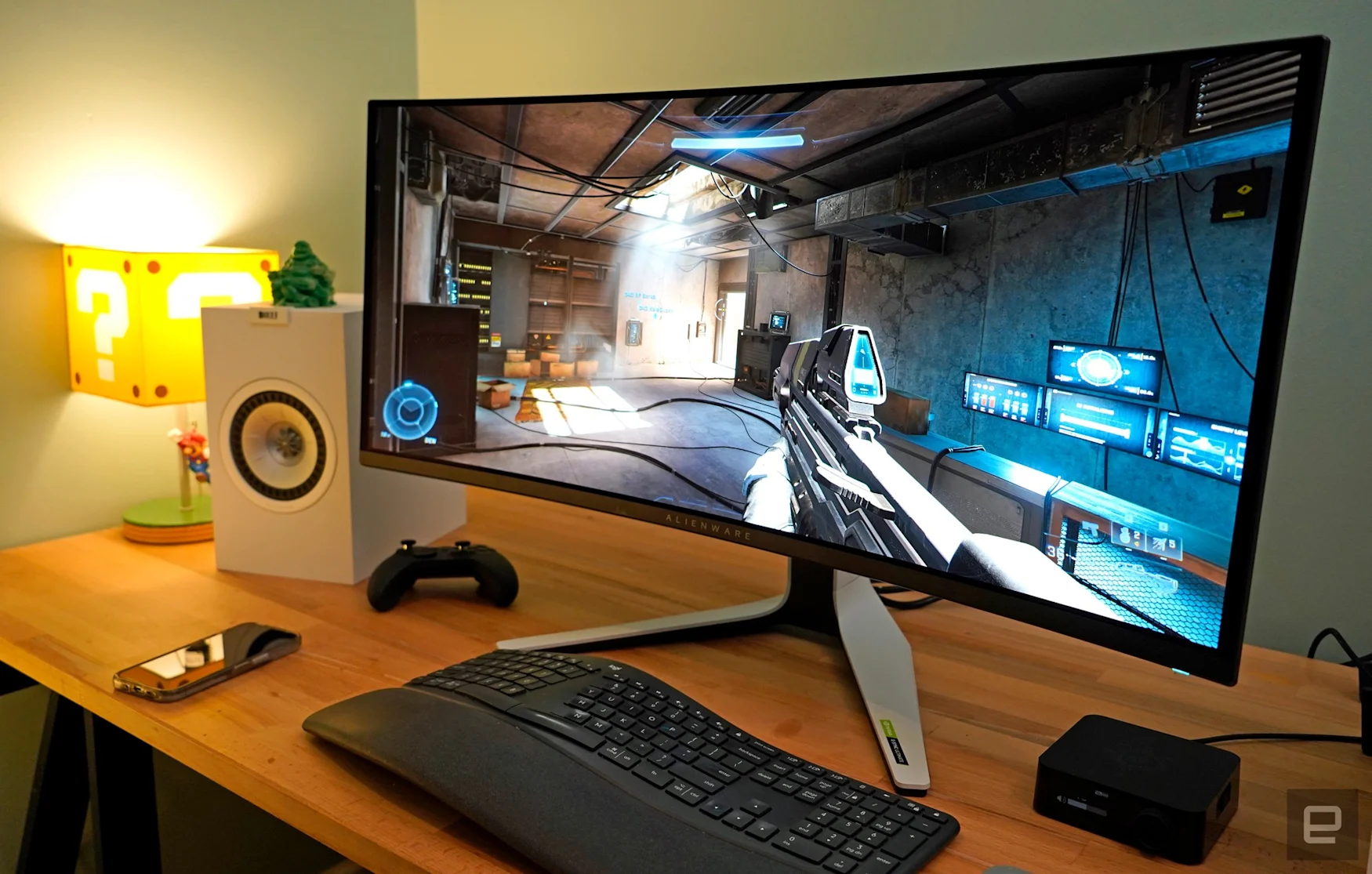
Devindra Hardawar/Engadget
Another important milestone in 2022 was the release of the first batch of QD-OLED monitors, headlined by the Alienware AW3423DW. The really nice thing about QD-OLED displays is that they combine the super saturated colors and pure blacks you get with traditional OLED panels, but with much better brightness, not to mention less blooming and wider viewing angles (when compared to conventional LCD displays). When you factor in its huge ultra-wide format and 175Hz refresh rate, you get what’s arguably the best overall gaming monitor on the market. And while Alienware was the first company to release a QD-OLED monitor, other companies like MSI have their own rivals coming soon.
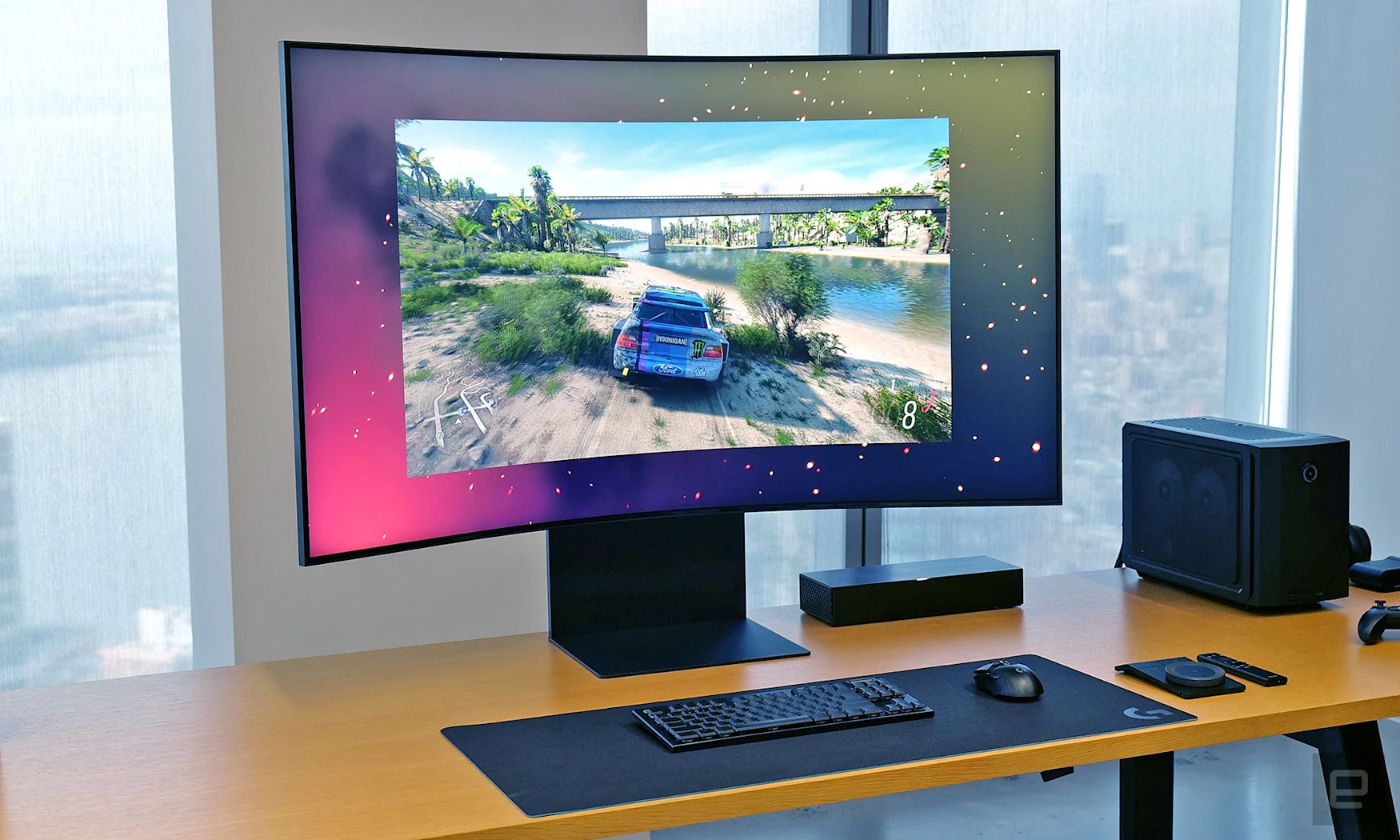
Sam Rutherford/Engadget
Alternatively, for people who don’t care about costs and just want the biggest and baddest gaming display on the market, Samsung’s Odyssey Ark was one of the most memorable gadgets I’ve used all year. With a massive 55-inch 4K panel and a 1000R curve, the Ark wraps around you like some kind of spaceship cockpit. And if that wasn’t enough, you can even rotate it into portrait mode, which delivers one of the most unique gaming setups I’ve ever experienced. The downside is that while the Ark has four HDMI inputs and a special Multi View mode (which is basically a souped-up picture-in-picture feature), due to a limitation with HDMI, it can only display content from one external source at a time. But if you have$3,500 lying around and want the most jaw-dropping monitor that came out this year, the Odyssey Ark can’t be beat.
I also recently had the chance to check out LG’s latest UltraGear gaming monitors with their new 240HZ displays, which is the highest refresh rate you can get from any OLED monitor on sale today. LG’s new panels mean you can get both the deep blacks and vibrant colors OLED screens are known for and the kind of refresh rates that previously were only available from IPS displays. The downside though is that with a max brightness of just 200 nits, the new UltraGears aren’t ideal for gaming in bright rooms.
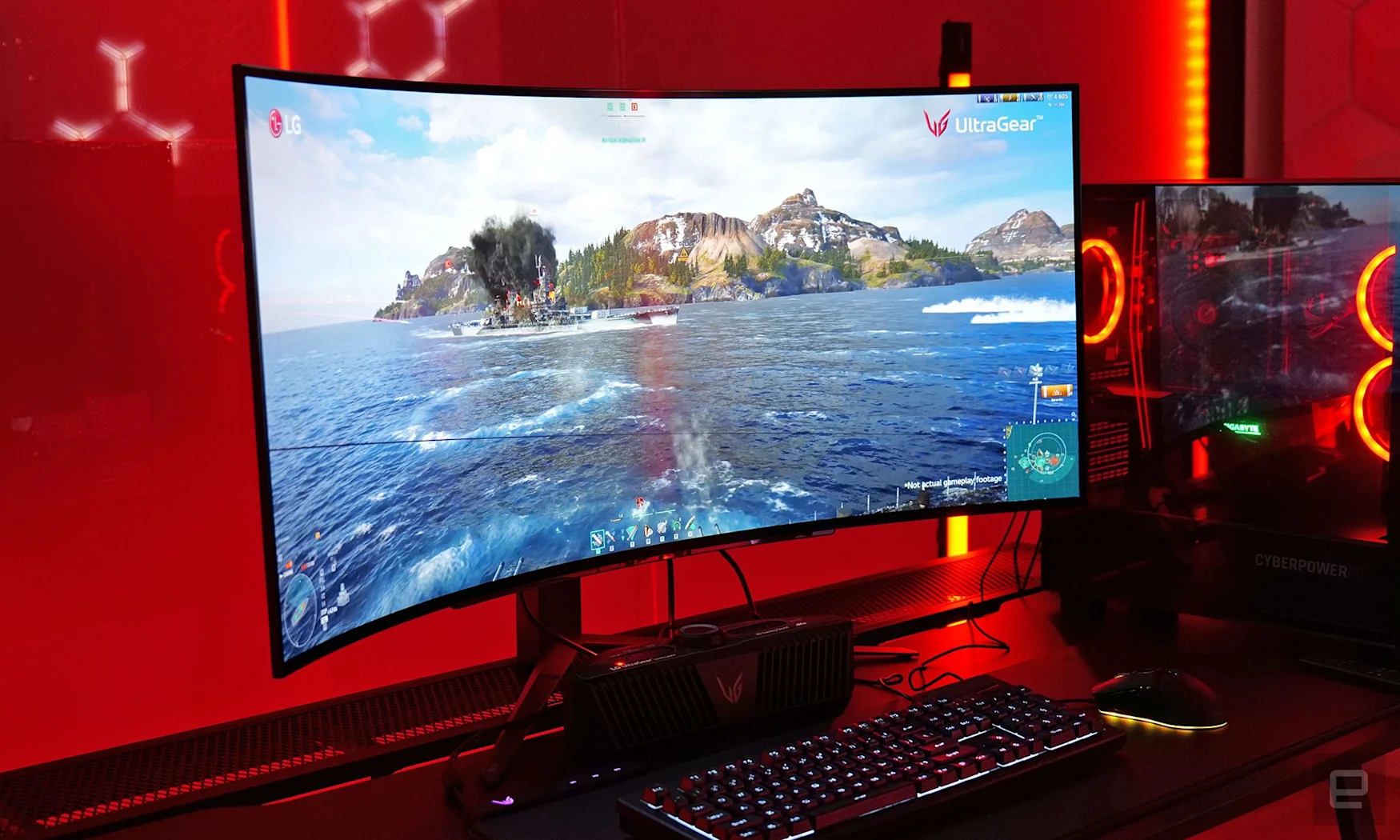
Sam Rutherford/Engadget
But as someone who’s been waiting a long time for OLED panels to become more mainstream, it’s really encouraging to see more products get added to the mix. That’s because while there are a handful of OLED monitors out right now (like the aforementioned Alienware AW3423DW), pickings are still pretty slim. Some like the LG C2 are actually just TVs that are also being pushed as large-format desktop displays. Meanwhile, ASUS’ ROG Swift OLED line uses the exact same panels LG uses in the C2, but with a few tweaks like a built-in heatsink and a DisplayPort 1.4 jack for improved gaming performance.
But perhaps the bigger issue is that, essentially, all the OLED monitors available right now are rather large. The smallest C2 and ROG Swift OLED models measure 42 inches across, while the Alienware AW3423DW isn’t much better with its 34-inch ultra-wide panel. But with LG’s new UltraGear OLED, we’re finally getting something in a more manageable size along with one of the highest refresh rates we’ve seen on an OLED monitor to date.
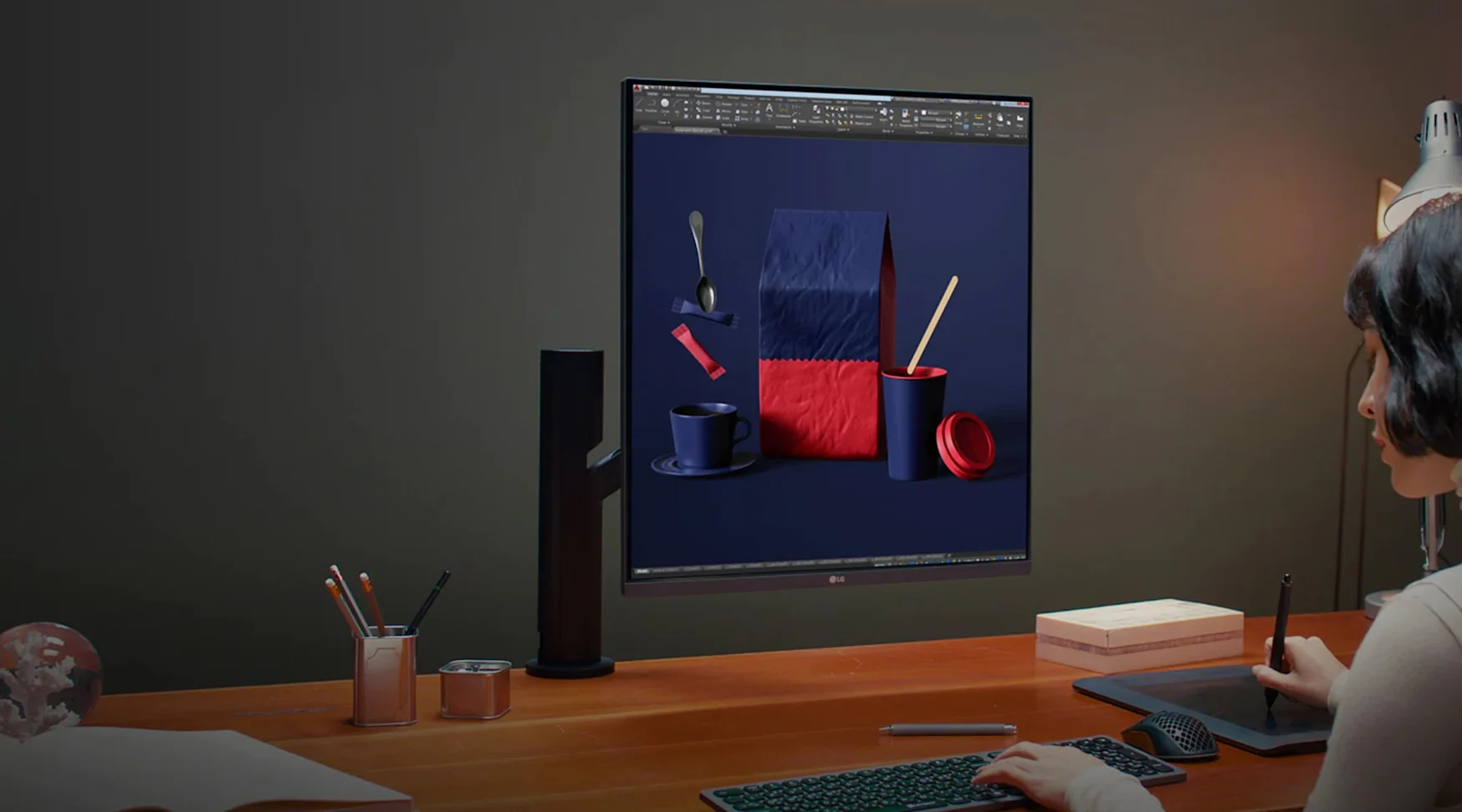
LG
Meanwhile, for anyone who isn’t a gamer, there were also some interesting new productivity displays that came out this year. That’s because while technically it was announced last year, 2022 also saw the release of LG’s DualUp monitor with its funky 16:18 aspect ratio. When combined with its included arm, you’ll enjoy a setup that boasts a ton of vertical screen real estate without needing to stack multiple displays or having to deal with a screen that’s too skinny when rotated into portrait mode. And, thanks to a color gamut that covers 98 percent of the DCI-P3 spectrum, the DualUp can handle a lot more than just really tall spreadsheets. LG even included support for power output of up to 90-watts, so you can get video from a laptop and keep it charged all with a single USB-C cable.
Finally, while it still needs a bit of refinement, Corsair just released its huge 45-inch gaming monitor with a bendable display called the Xeneon Flex. Now I know that the ability to manually transform a monitor from flat to curved might seems kind of silly (and it probably is, especially when gadgets like the LG OLED Flex exists and features built-in motors), but it’s nice to see more companies experiment with bendy screen tech. And who knows, maybe they can add a feature where the monitor goes into gaming mode when you bend it allowing your battle station to shift gears depending on the kind of work (or play) you’re doing.
Regardless, with more people working remotely than ever, it’s nice to have more choices when it comes to kitting out your setup. And I haven’t even talked about some of the other innovations from adjacent categories like TVs, laptops and phones such as the 240Hz OLED display option on the Razer Blade 15, new LED.EX TVs from Panasonic or the improved under-display-camera on the Galaxy Z Fold 4. (I recently used the UDC on my Z Fold 4 to dial into a video meeting, and not a single person complained about its image quality). Still, 2022 has been a great year for monitors and as we get closer to CES 2023, I’m expecting to see that momentum continue into next year.
All products recommended by Engadget are selected by our editorial team, independent of our parent company. Some of our stories include affiliate links. If you buy something through one of these links, we may earn an affiliate commission. All prices are correct at the time of publishing.
For all the latest Technology News Click Here
For the latest news and updates, follow us on Google News.
